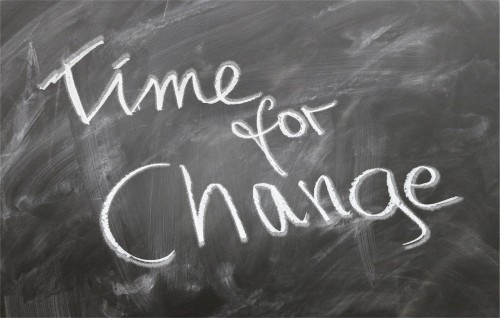Part 6f of my Magic Test of Seven
My learning’s from reading the book “Switch” Changing things when change is hard from Chip & Dan Heath.
The book builds upon a principle called the Elephant and the Rider. A brilliant metaphor that originates from a psychology book from Jonathan Haidt called “The Happiness Hypothesis”.
The elephant represents the emotional, automatic, irrational side of the brain, and the rider represents the analytical more controlled, rational side of the brain. According to the model, the rider is rational and can plan ahead while the elephant is irrational and driven by emotion and instinct. When the Rider and Elephant disagree about which way to move, you’ve got a problem.
The Heath Brothers suggest that when you want change the happen you need to:
· Direct the rider (the rational side of the brain)
· Motivate the elephant (the emotional side of the brain)
· Shape the path (with clear & concise directions that appeal to the rider and the elephant, removing all ambiguity)
The book is full of examples of cases where individuals managed to initiate change in remarkable ways.
Here a few that sticked with me:
The story of Jon Stegner, who believed the company he worked for, a large manufacturer, would be able to save a ton of money if they were to change their purchasing procedures. He knew however that the company would never embrace such a change unless they truly believed in the opportunity. He assigned a summer student intern to investigate just one single item – work gloves, which workers in most of the company’s factories wore. It was a brilliant idea as soon he was able to invite all the division presidents into a conference room with 424 different gloves piled on a table. “What they saw was a large, expensive table, normally clean or with a few papers, now stacked high with gloves. Each of our executives stared at this display for a minute. Then each said something like, “We really buy all these different kinds of gloves?” Well, as a matter of fact, yes we do. “Really?” Yes, really. Then they walked around the table .. . . They could see the prices. They looked at two gloves that seemed exactly alike, yet one was marked $3.22 and the other $10.55.” I think you can picture what happened next.
This story brought back many memories from my personal student times, where I worked with Dutch and German hospitals to save money by increasing transparency and leveraging purchasing power across the two countries. Rather amazing discrepancies came to light and after many re-negotiation’s the project ended up saving the Dutch government millions.
Another example I truly loved reading was the story of Jerry Sternin, who was working for Save the Children, an international organization that helps children in need. In 1990, he was asked to open a new office in Vietnam. When he arrived, the foreign minister told him, “You have six months to make a difference.” Where to start though? Sternin had done his homework. He knew that poverty was nearly universal. Clean water was not readily available. The rural people tended to be ignorant about nutrition. But he wasn’t going to be able to change that in six months with near to no resources. So he applied the “bright spot” strategy. He traveled to rural villages and met with groups of local mothers. They weighed and measured every single child to see if any of them were bigger and healthier and indeed there were several “bright spots”. It took them dozens of conversations to get to the roots of what these mothers did differently. The most important difference being that the healthy kids were eating slightly different kinds of food. The bright spot mothers were collecting tiny shrimp and crabs from the rice paddies and mixing them in with their kids’ rice. Shrimp and crabs were eaten by adults but generally weren’t considered appropriate food for kids. The mothers also tossed in sweet-potato greens, which were considered a low-class food. These dietary improvisations added sorely needed protein and vitamins to the children’s diet. Rather than just announcing these fabulous findings they designed a program in which malnourished families would meet and prepare food together. Six months after Sternin had come to the Vietnamese village, 65 percent of the kids were better nourished and stayed that way. Further organizations got involved and in the end the program reached 2.2 million Vietnamese people in 265 villages. An incredibly beautiful ripple effect. Very impressive.
Less profound but nonetheless impressive is the story of Robyn Waters, who was one of the behind the scene movers and shakers during the big transition time of Target, a large US retail chain. “I was going to Italy and attending meetings with Armani and Versace and rubbing shoulders with all the fashionistas, and that was really cool when you’re in your mid-thirties. But then one day we all got laid off. So that’s how I came to be open-minded.” She joined Target in 1992 as the “ready-to-wear” trend manager, which made her responsible for black stirrup pants, sweats, and Looney Tunes T-shirts. She’d wondered how she’d managed to slip from Versace to Tweety Bird. She had a tough task ahead of her, but her creative approach inspired the various teams one after the other. She didn’t talk about trends she brought in huge bags full of bright-colored M&Ms and samples of Apple’s recently released iMac computers – in lime, strawberry, grape, and tangerine, she created mood boards. Bit by bit people started to see it, the early adopters within the company started to try it, creating little success stories that sparked others. This is how organizational change happens. Slowly but truly.
As said, the book is full of inspiring examples, each unique in their own way.
There is one more that made me smile. And that is the story of the cleaning ladies. In 2007, two researchers, Alia Crum and Ellen Langer, published a study of hotel maids and their exercise habits. At the beginning of the study, 67 percent of the maids reported that they didn’t exercise regularly. More than a third said they didn’t get any exercise at all. Huh? It’s like a third of talk-show hosts complaining that they never get to meet anyone new. The researchers were curious about what would happen if the maids were told, to their surprise, that they were exercise superstars. So half of the clean maids were given detailed information on how just doing their job was contributing positively to their health. The maids were given estimates of the amount of calories they burned doing various activities: 40 calories for changing linens for 15 minutes, 100 calories for a half hour of vacuuming, and so on. Meanwhile, maids in the other group received the same information about the benefits of exercise, but they weren’t told that their own work was a good form of exercise (nor did they get the calorie-burning stats) . To make a long story short; four weeks later the maids in the first group lost on average nearly a kilo of weight yet the control group did not lose any. The researchers ruled out a whole bunch of possible causes to conclude that the weight loss wasn’t simply a statistical fluctuation. So why did they lose weight? Placebo effect? According to the Heath Brothers, the most likely explanation is that hearing the news that they really were exercisers was tremendously motivating. The maids succeeded in losing weight because they cleaned with just a little more enthusiasm than before, and the news of losing weight further motivated the Elephant. Sometimes all it takes is a change in mindset to trigger the right behavioral spiral.
What else did I jot in my notebook:
1. Self-control is an exhaustible resource – the rider can overrule the elephant on the short run, but that’s not sustainable
2. “Bright spots” solutions solve the “not invented” here problem. Some people have knee-jerk skeptical responses to “imported solutions.”
3. The difference between solution-focused-brief-therapy and Freudian psychoanalytics is that very simple little things can be more effective than “full-blown” root cause analysis (“After 5 years and 50k you discover it’s all your mom’s fault” yet what do you then do with that). There are times were focusing on what happened might not be the most effective way to improve someone’s current situation.
4. Knowledge does not change behavior – “We have all encountered crazy shrinks, obese doctors, and divorced marriage counselors.” It takes a lot more than just mere knowledge. We are great at outsmarting ourselves, often without even realizing it.
5. Our brain is wired towards the negative emotions.
· Look up a list of emotions and it becomes very obvious
· There has never been a successful novel about a happy marriage
· What’s your ratio of time spent on solving problems rather than scaling successes?
And last but not least one thing really resonated with me. The word TBU. Which stands for True but useless. We need to realize that many things in life are TBU. True but useless. That’s important to know because we can get trapped in analyzing things to death.
A wonderful three letter abbreviation that takes me back to my seven quotes I am to live by. Know what you can’t change and then change what you can.
This book makes me want to get creative. Repeating success is far from easy. Every situation is unique. But this book shows that change certainly is possible and that it can be done from any position. A very hopeful thought.


